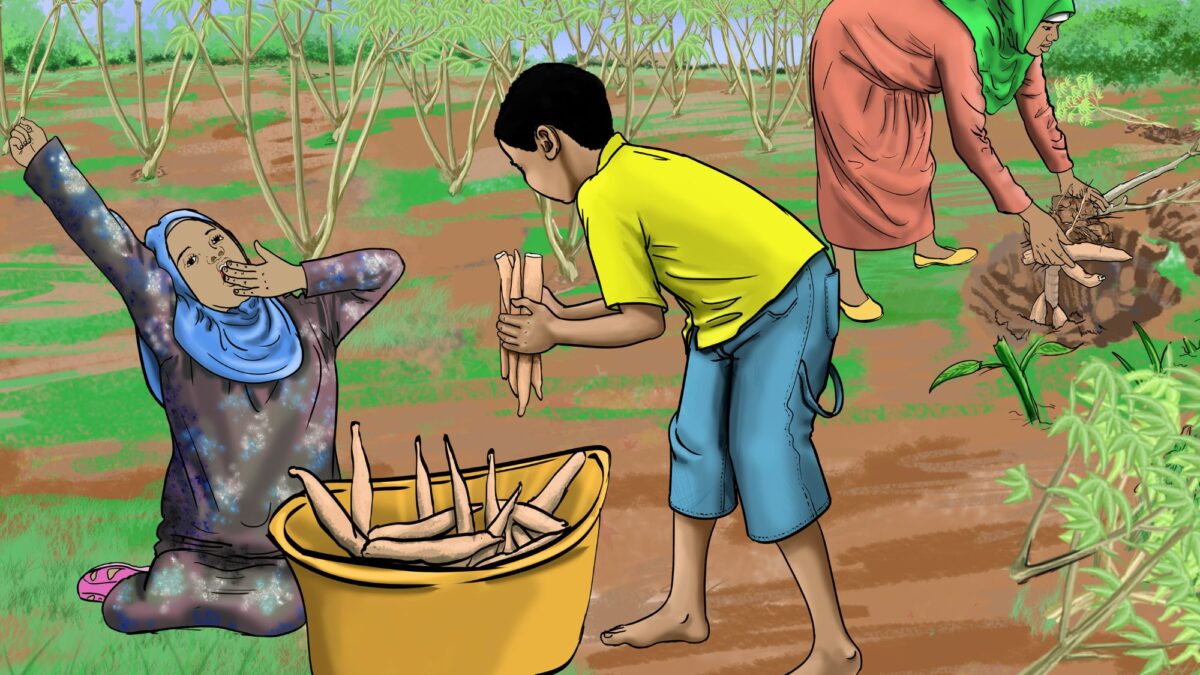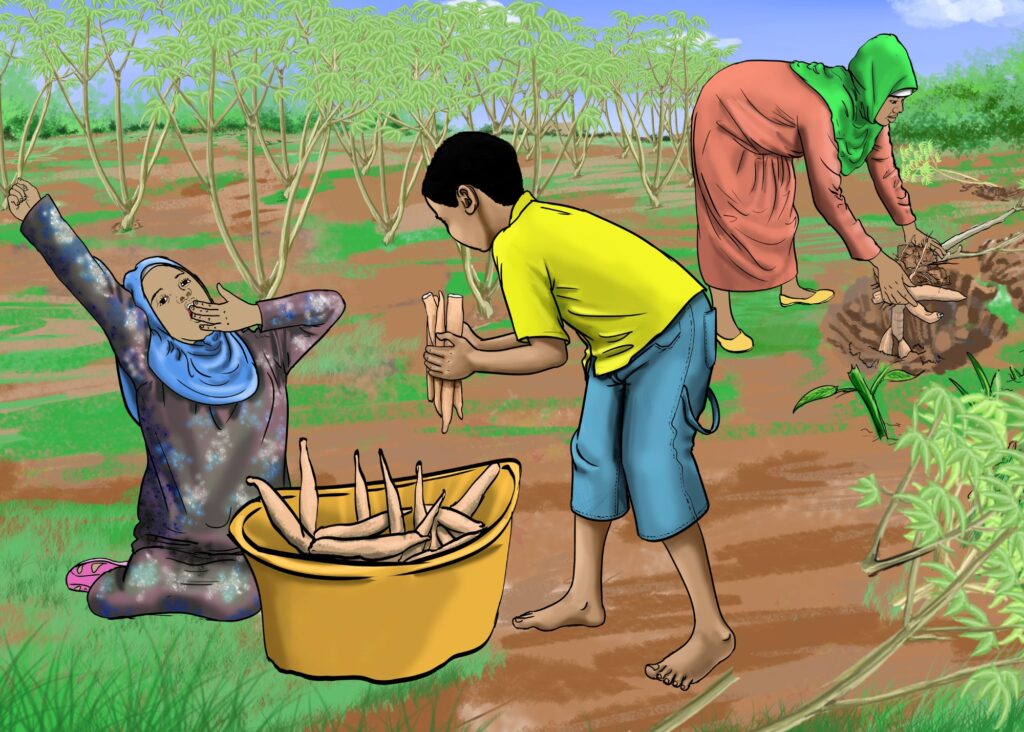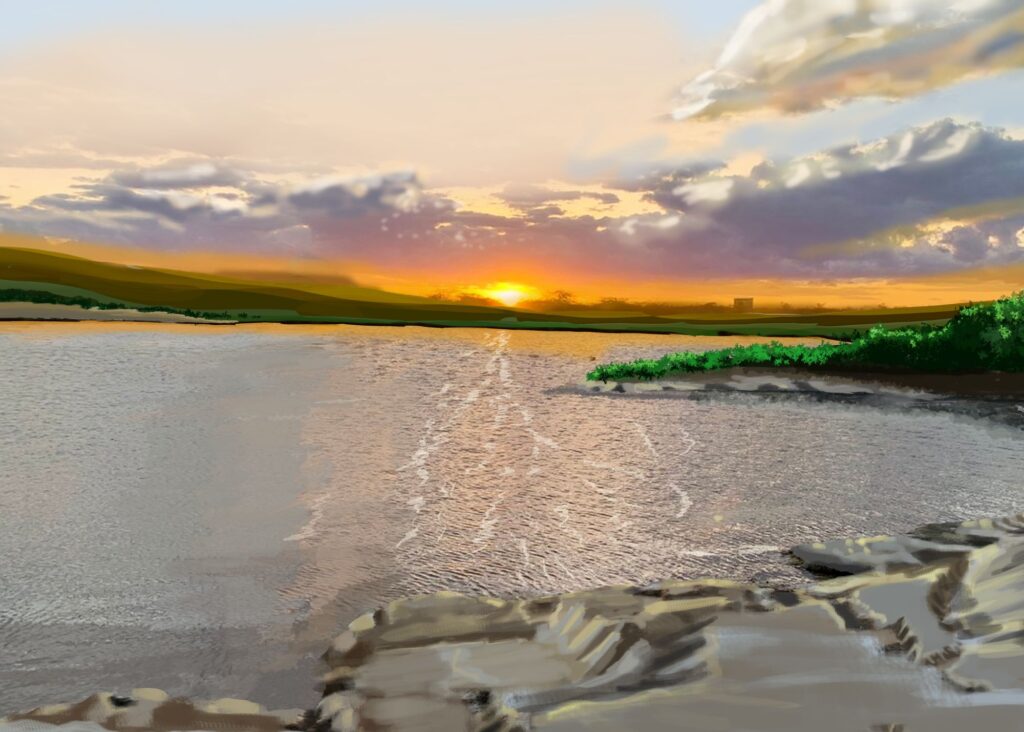The Wells of Wajir

Wajir county is a semi desert, it is very hot and gets little rain.
Mwende’s grandmother lives here and has a cassava farm.
Mwende and Malik are helping their grandmother harvest cassava early in the morning when it is cool before the scorching heat descends on them.
“Do you believe in giants?” Mwende asks Malik.
“Mmmmmh, well I guess only like the huge cassavas we have,” Malik responds.
Mwende laughs and says, “Seems these are not the only giants found here,”
Malik stands up to stretch and readies herself for one of Mwende’s fascinating stories.

“Well, let me tell you a story that is believed to be true. In Wajir it is believed that the several stone wells were made by giant grassland dwellers called Mandlane to support their pastoral heritage.” Mwende begins.
“Really?” Malik asks in surprise.
“How did the Mandlane know to dig wells?” Malik asks.
“Well part of the legend is that they were extraordinary water engineers whose science of water divinity was far ahead of their time.” Mwende says, pulling out a cassava.
“If the legend is true, does that mean Wajir is as old as dinosaurs?” Mwende asks.
“I do not know about that, but I do know it is one of the oldest towns in Kenya at over 105 years. That’s way older than our grandma.” Malik says looking up at where their grandma kept harvesting without a break.
“How is the history of Wajir preserved? It seems the desert sand buries things?” Mwende asks, scooping up soil and then letting it slip through her fingers.
“There is a museum established in 2011 to preserve our history. That’s where I learned that there was a massacre in 1984 called the Wagalla Massacre. At the Wagalla airstrip, the military were disarming the warring Somali clans and 1500 people died, only 57 have been confirmed dead to date.” Malik says getting back to the harvesting.

“Wow, for thirty-six years only 57 bodies have been found?” Mwende asks in shock, opening her water bottle to drink some water.
The sight of water reminded Malik of Lake Yahud which is the most beautiful point in Wajir because of its glistening waters, the birds always singing and the beautiful sunsets over the lake.
“Yes, it’s sad but true. Present day Wajir is all due to the effort of the women who rebuilt their region after the loss of men courtesy of the massacre. And that’s how Wajir got its name which is a Borana word that means “coming together,” Malik explains.
“The name Wajir is a really good name, a symbol to the strength, resilience and invincibility of Kenyan women and community.” Mwende says, putting her basket on her head.



